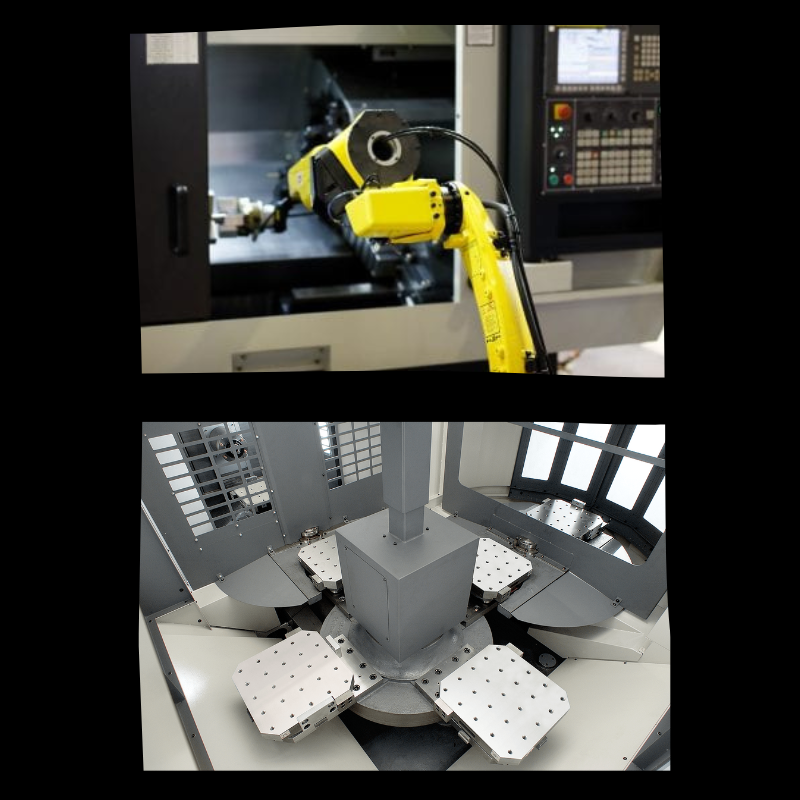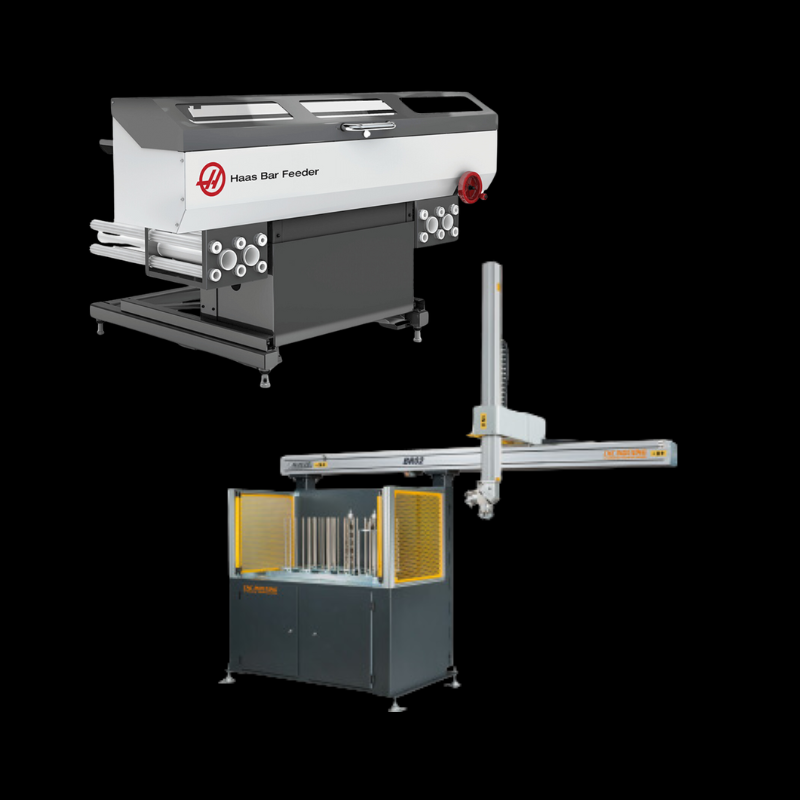Curious about how hydrostatics enhance the performance of CNC machines? Let's look into the mechanics and benefits of hydrostatic systems in CNC technology.
Hydrostatics in CNC machines involve using a fluid-based system to support and move machine components. This method ensures precise movements, reduced friction, and increased longevity of the machine parts. Hydrostatic systems are crucial for achieving high-accuracy machining and smooth operations.
Hydrostatic systems might sound complex, but their advantages in CNC machining are well worth understanding.
The Basics of Hydrostatics in CNC Machines
Hydrostatic systems in CNC machines utilize a layer of pressurized fluid, typically oil, between moving parts. This fluid layer reduces direct contact between surfaces, which minimizes wear and tear. This is particularly valuable in high-precision machining where even minor inaccuracies can affect the final product.
The pressurized fluid in hydrostatic bearings and guides creates a nearly frictionless surface. This allows for smoother and more precise movements of machine components. The absence of metal-to-metal contact not only extends the lifespan of the machine parts but also enhances the quality of the machined parts by reducing vibrations and thermal distortions.
Hydrostatics are especially useful in CNC machines that operate under heavy loads or require high accuracy, such as those used in aerospace and automotive industries. These systems can handle higher loads without compromising precision, making them ideal for demanding machining tasks.
Benefits of Hydrostatics in CNC Machines:
- Precision: Hydrostatic systems provide superior accuracy due to the smooth movement of components.
- Durability: Reduced friction leads to less wear and tear, prolonging the machine's life.
- Load Capacity: These systems can support heavier loads without sacrificing precision.
- Reduced Vibration: The fluid layer dampens vibrations, improving the surface finish of machined parts.
- Temperature Control: Fluid circulation helps manage the temperature, preventing thermal distortions.
The Origin of Hydrostatics in CNC Machinery
Ever wondered about the origins of hydrostatics in CNC machines? The application of hydrostatics in CNC machines stems from broader developments in fluid mechanics and hydraulics. Fluid dynamics principles have been studied for centuries, but significant advancements were made during the mid-20th century, particularly in the fields of hydraulics and precision engineering.
- Fluid Mechanics Foundations: The principles of fluid mechanics, which underpin hydrostatic systems, were extensively studied by scientists and engineers. Notable figures such as Daniel Bernoulli, who formulated Bernoulli's principle in the 18th century, laid the groundwork for understanding fluid behavior under pressure.
- Advances in Hydraulics: During the early 20th century, hydraulic systems saw widespread use in industrial machinery. Engineers began to recognize the potential of using pressurized fluid to reduce friction and wear in machine components. This period saw the development of hydraulic presses, lifts, and other machinery that utilized fluid power.
Key Contributors to Hydrostatics in CNC Machines
- Norbert Wiener and Cybernetics
Norbert Wiener, an American mathematician and philosopher, made significant contributions to the field of control systems and cybernetics. His work on feedback mechanisms and control theory in the 1940s and 1950s laid the foundation for applying fluid-based systems to machine control and precision.
- Robert H. Ball and Precision Bearings
Robert H. Ball, an engineer known for his work on precision bearings, was instrumental in developing hydrostatic bearings. In the 1950s and 1960s, Ball's research focused on the use of pressurized fluid films to support machine components, reducing friction and enhancing precision. His work paved the way for the integration of hydrostatics in high-precision machinery, including CNC machines.
- Development of Hydrostatic Bearings
The concept of hydrostatic bearings, where a thin film of pressurized fluid supports a load, was further developed in the mid-20th century. Engineers recognized that hydrostatic bearings could provide near-frictionless motion, making them ideal for high-precision applications. This led to their adoption in various machine tools, including CNC machines.
Evolution of Hydrostatics in CNC Technology
Hydrostatics became integral to CNC machines as the demand for higher precision and durability in manufacturing grew. The aerospace and automotive industries, in particular, required machining solutions that could achieve tight tolerances and high surface quality.
- Early Adoption: In the 1960s and 1970s, CNC technology began to incorporate hydrostatic systems. Pioneering companies in precision engineering and machine tool manufacturing started experimenting with hydrostatic bearings and guides. These systems offered significant advantages over traditional mechanical bearings, including reduced friction, increased load capacity, and improved accuracy.
- Technological Advancements: As CNC technology evolved, so did hydrostatic systems. Advances in fluid dynamics, materials science, and control systems enabled the development of more efficient and reliable hydrostatic components. Modern CNC machines now utilize sophisticated hydrostatic systems that provide unparalleled precision and performance.
- Industry Standards: Today, hydrostatics are a standard feature in many high-end CNC machines. Leading manufacturers continue to refine and improve these systems, leveraging cutting-edge technology to meet the ever-increasing demands of precision manufacturing.
How Hydrostatics Enhance CNC Performance
In CNC machines, the precision of movements is very critical and so hydrostatics helps play an important role in enhancing this precision. The fluid layer acts as a cushion, allowing for ultra-smooth movements. This smoothness translates directly into the precision of the machined parts, ensuring high-quality finishes and tight tolerances.
Moreover, the fluid in hydrostatic systems acts as a lubricant and a coolant. This dual functionality helps maintain optimal operating conditions. The constant circulation of the fluid removes heat generated during machining, which can otherwise lead to thermal expansion and inaccuracies.
Which Parts of the CNC Use Hydrostatics
Understanding which parts utilize these systems can help in appreciating their role and importance in the overall functionality of CNC machines.
Key Components Using Hydrostatics:
- Spindle Bearings: Hydrostatic spindle bearings are fundamental for maintaining the precision of the spindle's rotation. These bearings use a thin film of pressurized fluid to support the spindle, reducing friction and wear. This results in higher rotational accuracy and longer bearing life, essential for high-precision machining tasks.
- Linear Guides and Rails: Linear guides and rails with hydrostatic systems allow for smooth, precise movements of the machine's axes. The fluid film between the guide and rail minimizes direct contact, reducing friction and ensuring that the movement remains accurate over time. This is particularly important for maintaining tight tolerances and achieving high-quality surface finishes.
- Rotary Tables: CNC rotary tables often use hydrostatic bearings to support the rotating components. These bearings provide a stable and frictionless surface, allowing for precise rotational movements. This is especially helpful in multi-axis CNC machines, where accurate positioning is essential.
- Tool Turrets and Carousels: In CNC lathes and machining centers, tool turrets and carousels that utilize hydrostatic systems can change tools more smoothly and accurately. The hydrostatic support minimizes wear on the moving parts, ensuring reliable and repeatable tool changes.
- Axis Drive Systems: Hydrostatic systems in the axis drive components help in reducing backlash and improving the responsiveness of the machine. The fluid-based support ensures that the drive systems operate smoothly, enhancing the overall accuracy and efficiency of the CNC machine.
Benefits of Hydrostatics in CNC Components
The integration of hydrostatic systems in various CNC machine components brings several advantages, significantly enhancing the machine's performance and lifespan.
- Increased Precision: Hydrostatic bearings and guides provide extremely smooth movements, which translate into higher precision in machining operations. This precision is crucial for producing parts with tight tolerances and fine surface finishes.
- Reduced Wear and Tear: By minimizing direct contact between moving parts, hydrostatic systems reduce friction and wear. This leads to longer-lasting components and less frequent maintenance, resulting in lower operating costs over the machine's lifetime.
- Enhanced Load Capacity: Components supported by hydrostatic systems can handle heavier loads without compromising accuracy. This is particularly beneficial in applications requiring high forces, such as in the aerospace and automotive industries.
- Improved Vibration Damping: The fluid film in hydrostatic systems acts as a damper, reducing vibrations during machining. This not only improves the surface quality of the machined parts but also protects the machine from damage caused by excessive vibrations.
- Thermal Stability: Hydrostatic systems help in managing the heat generated during machining processes. The circulating fluid removes heat, preventing thermal expansion and maintaining the accuracy of the machine.
The adoption of hydrostatic systems by these leading CNC brands brings several advantages that set their machines apart in the market. The primary benefit is the enhanced precision achieved through smooth, frictionless movements. This precision is key for industries like aerospace and automotive, where even the smallest deviation can impact the overall quality and performance of the parts produced.
Moreover, the reduced wear and tear on machine components translate to longer machine life and lower maintenance costs. This is particularly useful for manufacturers who require reliable and consistent performance over long production runs.
The ability of hydrostatic systems to handle higher loads without compromising accuracy is another significant advantage. This makes these machines suitable for heavy-duty applications where maintaining precision under load is critical.
Comparing Hydrostatics with Other CNC Technologies
- Ball Screws
Ball screws are commonly used in CNC machines for linear motion control. They consist of a screw and a nut with ball bearings in between, which reduce friction and enhance efficiency.
Advantages:
- High Efficiency: Ball screws convert rotational motion to linear motion with high efficiency.
- Accuracy: They provide precise control of linear movements, suitable for various CNC applications.
- Load Capacity: Capable of handling significant loads, making them versatile for different machining tasks.
Disadvantages:
- Wear and Tear: Over time, ball screws can wear out, leading to decreased precision.
- Maintenance: Regular lubrication and maintenance are required to maintain performance.
- Backlash: Potential for backlash, which can affect accuracy if not properly managed.
When comparing hydrostatics to ball screws, several key differences stand out. In terms of precision, hydrostatics offer superior accuracy due to their near-frictionless movement, while ball screws, though precise, can suffer from backlash, which impacts their overall accuracy. Regarding durability, hydrostatic systems experience less wear and have a longer lifespan compared to ball screws. Maintenance is also a significant factor: ball screws require more frequent maintenance and lubrication, whereas hydrostatics need less upkeep, making them more reliable over time.
- Linear Bearings
Linear bearings are used to provide smooth and precise linear motion. They typically consist of rolling elements, such as balls or rollers, between two surfaces.
Advantages:
- Smooth Movement: Provide smooth and accurate linear motion.
- Cost-Effective: Generally less expensive than hydrostatic systems.
- Ease of Installation: Relatively easy to install and replace.
Disadvantages:
- Wear and Tear: Subject to wear over time, which can reduce accuracy.
- Friction: Although reduced, there is still some friction compared to hydrostatics.
- Load Capacity: May not handle as high loads as hydrostatic systems.
When comparing hydrostatics to linear bearings, hydrostatics offer higher precision with reduced friction, leading to greater accuracy. In terms of durability, hydrostatics are more robust and experience less wear over time. However, linear bearings are more cost-effective and simpler to maintain, making them an attractive option for applications where extreme precision is not as critical.
- Air Bearings
Overview: Air bearings use a thin film of pressurized air to support and guide moving parts, similar to hydrostatics but using air instead of liquid.
Advantages:
- Frictionless Movement: Provide virtually frictionless motion, enhancing precision.
- No Wear: Lack of contact eliminates wear and extends lifespan.
- Clean Operation: Do not require lubrication, resulting in a cleaner operating environment.
Disadvantages:
- Load Capacity: Generally, air bearings have lower load capacities compared to hydrostatics.
- Cost: Can be expensive to implement and maintain.
- Complexity: Require precise control of air pressure and quality to function correctly.
When comparing hydrostatics to air bearings, both systems offer high precision, but hydrostatics can handle heavier loads. In terms of durability, both systems have minimal wear; however, hydrostatics are often more robust for industrial applications. Maintenance differs between the two: air bearings require careful air pressure management, while hydrostatics need fluid management.
Pros and Cons of Hydrostatic Systems in CNC Machines
Wondering why hydrostatics are preferred in CNC machines over other methods? Hydrostatic systems offer numerous advantages, but they also come with some challenges. Let's explore the benefits and drawbacks to help you understand why many manufacturers choose this method.
Hydrostatics in CNC machines offer superior precision, reduced friction, and enhanced load capacity, making them ideal for high-precision applications. However, they can be more expensive to maintain and require careful management of fluid systems. These factors must be weighed when considering hydrostatic systems for CNC machines.
Advantages of Hydrostatics in CNC Machines
Superior Precision
Hydrostatic systems provide exceptional precision due to the nearly frictionless movement of components. The pressurized fluid film ensures smooth and accurate movements, which is crucial for high-precision machining tasks. This level of precision is difficult to achieve with traditional mechanical bearings and guides.
Enhanced Durability
The reduced friction and wear provided by hydrostatic systems result in longer-lasting machine components. This translates to lower maintenance costs and less frequent replacement of parts, offering a significant advantage in terms of machine longevity and operational efficiency.
High Load Capacity
Hydrostatic systems can support heavier loads without compromising precision. This makes them ideal for applications that require handling substantial forces, such as in the aerospace and automotive industries.
Improved Vibration Damping
The fluid layer in hydrostatic systems acts as a damper, reducing vibrations during machining. This is beneficial for both the quality of the machined parts and the longevity of the machine itself.
Thermal Stability
Hydrostatic systems help manage the heat generated during machining processes. The circulating fluid removes heat, preventing thermal expansion and maintaining the accuracy of the machine.
Disadvantages of Hydrostatics in CNC Machines
Higher Initial Costs
One of the main drawbacks of hydrostatic systems is their higher initial cost compared to traditional mechanical systems. The technology and materials required for hydrostatics are more expensive, which can be a barrier for some manufacturers.
Complex Maintenance
Maintaining hydrostatic systems can be more complex than traditional systems. Regular checks and careful management of the fluid levels and quality are essential to ensure optimal performance.
Dependency on Fluid Quality
The performance of hydrostatic systems is highly dependent on the quality of the fluid used. Contaminated or degraded fluid can significantly impact the system's efficiency and lifespan.
Additional Weight
Hydrostatic systems can add weight to the CNC machine, which may be a concern in applications where weight is a critical factor.



